
..........................................................................................................................................................................................................
hutchinson 700x40c tundra gravel tyres part two
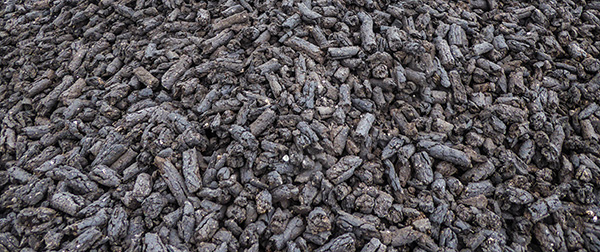
until a matter of years ago, castlehill on islay, just off the high road and not that far from islay international airport, was notable for only one thing: peat. in 1985, there was a great spat over the ground at duich moss on the low road, when modern-day diageo announced they intended to increase the amount of peat they extracted from the peat moss. given that duich moss is, historically, an important site for overwintering geese, you can perhaps see the likelihood of confrontation between conservationists and the whisky industry.
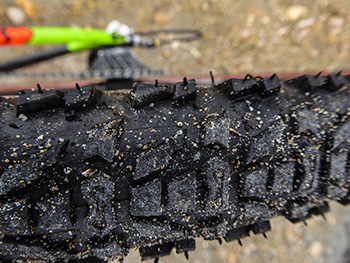
in fact, one of britain's higher profile conservationists, david bellamy, attended a somewhat belligerent public meeting, following which both he and several 'friends of the earth' supporters were effectively driven from the island by locals, concerned that bird life was being prioritised at the expense of local industry and employment. subsequently, duich moss was designated as a special protection area for birds and diageo were offered the alternative site at castlehill, for which they apparently hold an agreement with nature.scot allowing them to harvest peat until there is, quite literally, no more peat to be harvested.
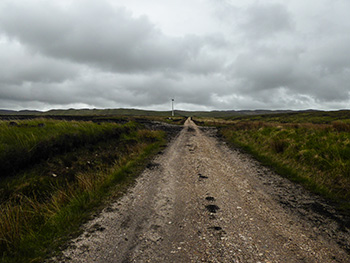
with the announcement last week that islay is one of six west coast islands intended to become carbon neutral by 2040, it should be interesting to see how that works out. and yet, at castlehill, there's more.
the contradictory nature of the site hadn't quite dawned on me until a recent visit, riding my specialized cyclocross bike, shod with hutchinson's excellent tundra gravel tyres. you see, once past the enormous peat extraction area, at the end of an intriguing and rugged gravel track, sits islay's sole commercial wind turbine, installed at the behest of islay energy trust, presumably as a tangible outward sign of their environmental intent. so along a single gravel ride, it's possible to view two entirely contrary means of energy generation; one a great deal less environmentally sound than the other.
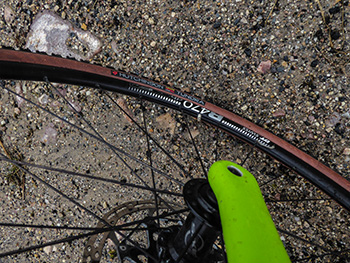
the gravel track offers a cornucopia of gravellous cycling, featuring gravel as you and i probably understand it, along with lengthy stretches infested with substantial amounts of peat dust, a material that can offer all manner of difficulties, depending on whether it's dry or wet. the apparently tough tan sidewalls on the tundras were a welcome safety net during my perambulations towards the wind turbine, and the tread was most favourable towards clearing that peat dust before accumulation made things all skitey.

though the hutchinsons are designed to be run in tubeless mode, as mentioned in part one of this review, there's just too much faff involved for yours truly, so this particular pair were inflated via an old fashioned pair of inner tubes. it's more than likely that the tundras can be run at lower pressures in tubeless mode, but i found anything below 30psi to be a bit dodgy if traipsing across agressive sections of gravel, though on muddy, peaty sections, lower pressure gave increased grip, particularly up front. i rode the same peaty, muddy section with low pressure (30psi) and high pressure (45psi), the latter being predictably somewhat sketchier in places, almost to my physical detriment at one point.
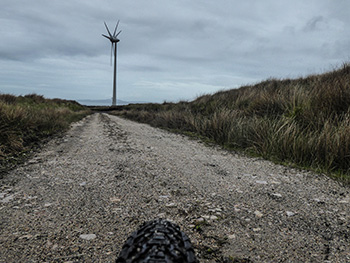
there's no real denying that the tundras are a bit of a liability when it came to riding the road to reach intersting sections of local gravel. and i gained the distinct notion that they could be ridden far quicker on gravel than they could on ostensibly, smooth tarmac. compared to the same bike shod with 33mm road-style tyres, my average speed was more than 5kph slower, and i was seemingly unable to do anything about it. however, since the tyres were hardly designed to aid mark cavendish in a giro sprint, this is surely of superficial interest?
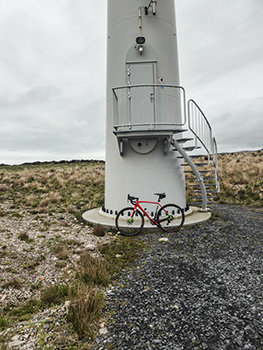
giving them a hard time across stretches of gravel, they were absolutely marvellous, holding their line particularly well at the hands of a gravel incompetent. it's only been a few weeks since i received the tundras, so tread wear is unlikely to show up this soon, and indeed, it hasn't so far. however, considering the wide range of gravellous surfaces across which they have accompanied me, a quick hosedown post ride, and you'd be hard pressed to tell.
i mentioned in the first part of this review, that the clearance between the chainstays was minimal at best, yet throughout all the gravel rides, including the occasional muddy splatter, that lack of clearance has presented no problems whatsoever. if gravel riding is your 'thing', it would be very hard to go wrong with a pair of hutchinson tundras, as long as you don't have a lengthy road ride to get there.
hutchinson's tundra gravel tyres are available in 700x40c tan wall at a retail price of £49.95 each. | hutchinson tundra gravel tyres
monday 23 may 2022
 ..........................................................................................................................................................................................................
..........................................................................................................................................................................................................where did it all go so horribly wrong?

i still have them, hanging up on what remains of my toolboard n the bike shed. two substantially sized spanners, once used to adjust bicycle headsets, designed for one-inch diameter steerers which accepted the once ubiquitous quill-stem. then we were sold a dummy at the behest of the mountain bike brigade, with dia-compe (i believe) convincing the great unwashed that the a-headset was a far better option, requiring merely an allen-wrench (actually, usually two, since the clamp bolts were, as now, almost always a different size to the centre bolt) to adjust.
but rather than publicise the ease of adjustment when miles from the nearest bike shop, the selling point was the alleged weight saving, not only via the simplified headset, but no longer having to insert a quill with adjustable wedge. though there were obviously variations in the latter, depending on the setup, suddenly the option to raise or lower the handlebars disappeared overnight. cut the steerer too short when assembling, and life suddenly became either more restricted, more expensive, or possibly both.
of course, some solution would have eventually been required, for though it's relatively simple to thread a steel or alloy steerer, life becomes ever more complicated when you introduce carbon to the party. but even in such transient times, until aluminium became the material du jour, the headset and its steerer remained at 1", before expanding over a brief history of time, to become anything between 1.125" and 1.5". and though the obvious explanation for the latter was the ever-increasing tube diameter, it's possible this was simply a subterfuge leading to the current state of play that must surely have bike mechanics throughout the world, wishing they had chosen an alternative trade.
you will, i'm sure, have paid at least brief attention to the illustration above, something of a horror story brought about by the urgent need to be as aero as possible. i think i may already have pointed out one or two fallacies inherent in this desire, one of whch is surely colnago's recent release of their tt1, time-trial bike, which apparently spent more than a few minutes in a university wind tunnel, yet failed to make the top ten in the giro's first time-trial.
of course, it could possibly redeem itself next sunday, but, on the basis that i believe it may rest more upon the shoulders of the rider than the alleged wind-cheating properties of the frame, i wouldn't hold your breath. but this insistent desire to fend off any wind-induced drag, hasn't simply stopped at the aerodynamics of slabs of carbon fibre.
if we might return to the headset, as illustrated above, it has become less a receptacle for a set of cartridge bearings, more a convoluted pathway for every cable that has to attach itself to one or other of the brake levers. i cannot deny that, visually, a lack of cables around the bars does engender a certain simplistic aesthetic, but at what cost? can it really be that over all these past years, my forward progress has been hindered by something so minimal in both length and diameter as a brake or gear cable?
i seriously doubt it.
but the complexity of the modern racing bicycle seemingly knowns no bounds, yet has entered a career path that can only, ultimately, become null and void. once everyone has an aero-frame, potential advantages pretty much evaporate. once everyone's cables follow a convoluted path through the inner recesses of that aero frame, once again, any perceived advantages disappear. but in the process of effectively standing still, the industry creates not only endless maintenance difficulties, but a concomitant rise in the cost of doing so.
as mike stead tweeted during this last week, many a bike shop offers a list of prices, covering simple tasks such as puncture repairs, all the way up to a full-service. included in that list might conceivably be a fixed price either for headset bearings or even full headset replacement. but imagine pricing the former at a nominal £50 and being faced with the miasma illustrated above.
my original attraction to the road bicycle, as opposed to an mtb, was its relative simplicity. at one time, groupsets were of polished alloy and tended to remain the same for several years at a stretch. a decent set of wheels consisted of polished hubs that featured as a part of the aforementioned groupset, mostly constructed with 32 laced spokes, and the brake cables exited the top of the levers. frame were of lugged, brazed or welded steel, headsets were of the 1" variety and a cinelli stem was the last word in sculptured aesthetics.
despite my luddite tendencies, it's obvious to even me, that change is an intrinsic part of every activity or sport, including the implements required to participate. but at one time, it was a relatively simple task to maintain your own bicycle, even with a restricted tool set, dropping it into the bike shop for the more onerous duties. and even then, the cost of doing so was most equitable, because invariably, the bike shop possessed the very tools that simplified matters and allowed for an expeditious return.
on arrival of the mv finlaggan car ferry to the islay route in 2011, the fact that it didn't fit any of the piers was explained away by the ferry company as conditioned progress. "if we designed all our ships to fit the existing infrastructure," they said, "how would that be an appropriate response to changing passenger expectations and demands?" they may have had a point, but i seriously doubt that any professional or amateur cyclist ever exclaimed at the end of a bike ride, "if only we could get rid of those darned cables and fit them inside the frame." nor, indeed, is it likely that bike shop mechanics unanimously pointed out that headset maitenance was, on the whole, just a tad too simple, and really ought to be made more time-consuming and frustrating.
someone needs to tell them to stop, and sooner, rather than later.
sunday 22 may 2022
 ..........................................................................................................................................................................................................
..........................................................................................................................................................................................................say it ain't so
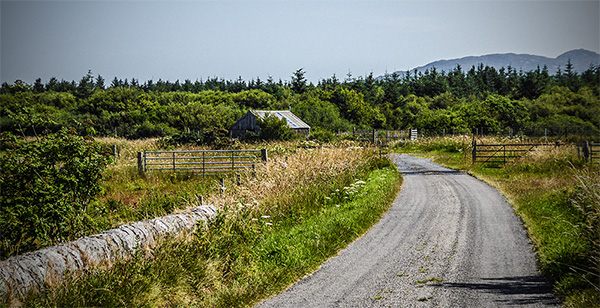
generally speaking, i like to think of myself as an optimist, though i'm always aware of the statement that 'a pessimist is an optimist who knows.' i'm also very well aware that, unlike carlsberg lager, the post is hardly a cycling blog that reaches the parts that other cycling blogs fail to reach. therefore, it's highly likely that, despite having written pretty much the same article year on year, for longer than i'd care to admit, i feel honour bound to do so once again. in fact, despite my professed optimism, i think it highly likely that we'll be discussing the same subject this time next year.
i have also previously mentioned that, locally at least, i appear to have become a spokesperson for 'my people'. on more occasions than i care to admit, occasions that have multiplied considerably of late, i have been accosted by friends and innocent bystanders to be graphically informed of an itinerant group of cyclists upon which they happened on the low road/high road/kilchoman road/uiskentuie strand (delete as applicable) who were riding four or five abreast, failed to use any of the passing places, failed to move into single-file, or any number of other uncategorised criminal offences.
i often wonder what the response would be if i were to pose the same set of misdemeanours to each and every car driver of my acquaint, because, as we all well know, there is a far greater number of misbehaving motorists than cyclists?
however, there's no real denying that many of the accusations levelled at itinerant cyclists on islay, and no doubt throughout rural and remote western scotland, have a strong basis in truth. sad to say, i've witnessed similar incidents myself, even having been castigated by one group for suggesting that they ride at less than six abreast up the hill at blackrock. but before we get into the nitty gritty of the whys and wherefores, let's present a few home-truths.
for starters, cyclists have exactly the same rights to the road as motorists, and if they decide to obstinately implement those rights, legally, there's no official denial. you can ride up to two abreast without incurring the wrath of the law. and logically, passing one bike length, even two abreast, is quicker than passing two bike-lengths riding single file.
on two-lane roads, even moving to single-file does not leave sufficient space for overtaking should there be oncoming traffic, so there's no real problem riding two-abreast. and the law currently dictates that motorists should allow 1.5metres when passing cyclists, a law that can really only be flagged-up by on-bike video; the chances of the police (on islay at least) catching a motorist in the act, are infinitesimal. sadly, it's a law that seems as pointless as those pertaining to mobile phone use when driving, bearing in mind the difficulties of policing the latter.
nonetheless, perhaps we can agree on one or two rules of conduct, rules that might just entail safer cycling and a smidgeon of endearment to the motoring public? for starters, while two abreast is pretty much ok, try and contain yourselves to one side of a two-lane road. two abreast is marginally less advisable on single-track roads, but even the motoring public would have to agree that overtaking on such a narrow road is all but impossible even when cyclists adopt single-file (that said, it doesn't seem to stop several miscreants from attempting it anyway).
earlier this week, a fuel tanker went off the road en-route to caol ila in the north of the island, and was left lying on its side with a full load of fuel oil. aside from destroying a lengthy portion of the verge, a large crane had to be brought in from the mainland to lift the tanker from its prone position. the likely cause of this incident relates to the way in which many of islay's roads have been resurfaced. the new coating of tarmac is often unceremoniously laid on top of the old, providing a pristine surface, but in the process, creating a rather steep drop-off onto the grass verge, often hidden by the increased growth at this time of year.
i'm sure you can equate this to the damage you might inflict upon yourselves if opting to suddenly shift onto the verge when avoiding any passing vehicles. ideally, passing cars would wait until it is safe for cyclists to enter a passing place, but it's far better to anticipate this not to be the case and move into the first passing place you can find, rather than idling along, oblivious to all around. it would be helpful if whomsoever reached a passing place first, gave way to the other, but in the majority of cases (even when talking about car passing car), that's not going to happen. swallow your pride and obstinacy and get the heck out of the way, even more so if meeting a truck or tractor, the drivers of which are likely to be working (yes, even on a sunday) as opposed to your leisurely cycling holiday.
but let's face facts; if you were in a hurry, you'd be unlikely to have chosen to visit the islands by bicycle, so what's the rush? if you have to pull over for car after car, so what? that really doesn't explain why visiting motorists often attempt to emulate lewis hamilton, but they're bigger, heavier and faster than you, probaby trying to compensate for being stuck in a tin box surrounded by the great outdoors; adopt the moral high ground and punish them even more with unbridled courtesy.
the motoring public in all corners of the world, often have a skewed notion of how cyclists ought to behave in their presence. but whether they're right or wrong, save yourself any possible grief by acceding in the name of safety. in one week's time, islay will be inundated with thousands of visitors for the first 'real' whisky festival since 2019. many of those will visit by car or, heaven forbid, rented motorhomes which they quite patently can't drive and almost certainly can't reverse. while i have no desire to undermine cyclists' rights, i'd like everyone visiting the island to enjoy their time over here, with no reason whatsoever to visit our cottage hospital, or suffer face to face confrontations on any one of islay's single-track roads.
as a result of health and safety regulations, the numbers joining any distillery tour are strictly regulated. should you meet a group of whisky aficionados hurrying en-route, in order not to miss a booked, expensive and pre-paid tour or masterclass, let me assure you that your safety on the bicycle is not high on their list of essentials.
let sense prevail. and hopefully today's scribblings will result in my no longer having to stand up as spokesmen for my people in the middle of bowmore main street.
saturday 21 may 2022
 ..........................................................................................................................................................................................................
..........................................................................................................................................................................................................the carriage to the isles
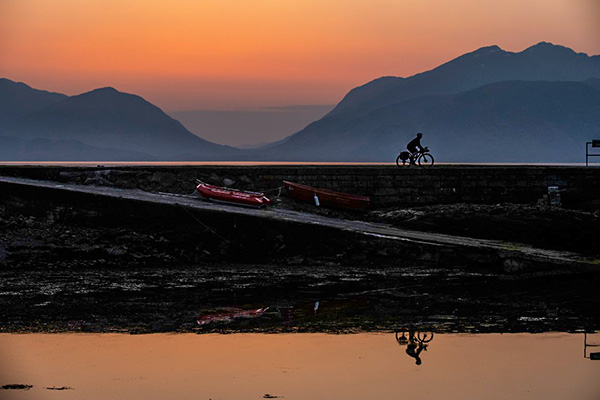
not one with much in the way of corporate comprehension, it has long confused me why the nationally named 'scotrail' featured wording on the carriages informing the travelling public that services were operated by 'abellio', the nationality of which, it transpires, is dutch. how the heck can one country's national rail network be owned and operated by an entirely different country? however, matters have now been resolved in scotland's favour, with holyrood having taken over abellio's mantle as of 1 april.
traditionally, 1 april is known as april fool's day, and following yesterday's news that scotrail services are apparently about to be cut by 30%, there may be some truth in its apellation. of course, i write this from a safe distance, given that islay, and the majority of the hebridean islands, are bereft of any rail services whatsoever. according to islay's biographer, margaret storrie, the fact that the a846 (low road) is almost dead straight, was due to a proposed rail service between port ellen and bowmore in the early 1960s. the beeching cuts of the period effectively ended that proposal for good. quite what such a railway was intended to achieve over a distance of only 16 kilometres is pretty much anyone's guess.
but not everything associated with scotrail and its new proprietors should be seen in a negative light, following the launch of active-travel friendly highland explorer carriages, linking glasgow with oban, the latter not too far from my corner of the woods (at least by ferry). this has led to scots being urged to visit argyll and bute this summer on two wheels, as opposed to the more usual four. the above-mentioned highland explorer carriages are capable of carrying 26 bicycles on the highland line to oban, 'making it easier than ever to reach some of the country's best cycling routes.'
theoretically, this will make it simpler for those intending to indulge a modicum of island hopping, a practice historically made easier by the existence of calmac's island-hopper tickets. should islay and jura form part of your itinerary, it ought now to be a simple matter of arriving in oban on either saturday or wednesday, and taking the port askaig ferry that sails via the island of colonsay. thus, you could arrive on islay on a wednesday and leave for more northern parts on saturday. or, perhaps, allowing for more time spent at the distilleries, travel to islay on the saturday and stay until the following wednesday. job done.
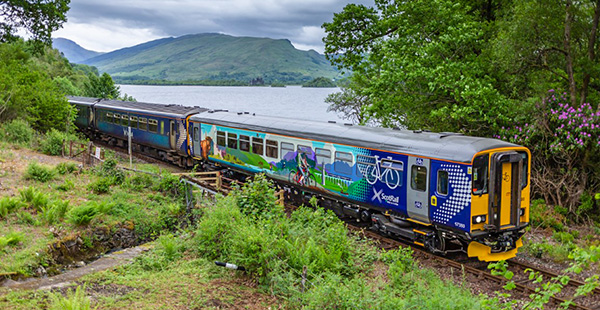
david adams mcgilp, a gentleman i have actually met, believe it or not, who is regional director at visitscotland, said, "Scotland has many fantastic cycling routes to explore. Through our work with Sustrans and Highland Explorer, we aim to inspire people to explore Scotland by public transport and cycling. Responsible tourism is at the heart of VisitScotland and is threaded through all the work that we do. There's no better way to relax and enjoy our stunning scenery than by taking the train and by bike, while at the same time contributing to Scotland's ambition to be net zero."
the latter point has also been reinforced by islay having been chosen along with five other scottish isles to become net zero by 2040. this has given rise to a certain amount of incredulity, given that islay has nine distilleries and another two under construction. that's one heck of a lot of energy to replace in a somewhat brief period of time. however, how that is achieved is well outside the scope of a cycling blog such as the post.
visitscotland has helpfully appended a number of easily reachable cycle routes at the website address listed below, that can be enjoyed by those deciding to take their bicycles with them to the west coast. and for those using e-bikes, although scotrail recommend charging the battery prior to travel, there are dedicated charging facilities available onboard, though you'll need to carry your own charging cable. according to scotrail's 'frequently asked questions', there is no charge for cycle reservations, but due to the anticipated numbers using the service, making a cycle reservation is compulsory. (similarly, there is no charge for bicycles on calmac ferries.)
scotrail advise that they eventually intend to increase the range of the service to fort william/mallaig and hope to encompass other routes as time rolls by. much has been spoken and legislated about so-called active travel, most of which has been covered by footpaths and mixed-use paths to allow for safe cycling and walking between major and minor destinations (including two on islay). the addition of these highland explorer carriages to the scotrail network, even if they currently only run between queen street and oban, is a welcome first step.
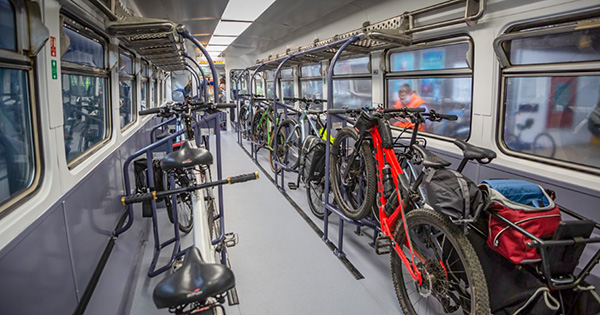
highland explorer | top photo: ©andy mccandlish
thursday 19 may 2022
 ..........................................................................................................................................................................................................
..........................................................................................................................................................................................................the break. my life as a cycling maverick - steve cummings. allen unwin hardback. 318pp illus. £20

bruichladdich distillery features, as part of its various offerings, an academy, ostensibly a quasi-educational institution for which whisky aficionados pay large sums of money to attend for a period of one or two weeks, learning about each aspect of the whisky production process. this ranges from rolling casks into the warehouses, to checking the veracity of the spirit pouring into the spirit-safe. it is a slightly ironic situation given that the distillery's employees, as well as those at the island's other distilleries, are remarkably well remunerated for doing the very same thing.
while the majority of those intent on visiting the island during the last week of this month for fèis ìle/ the islay whisky festival, would probably give their right hands to work in a distillery, to a certain extent, locally, it's simply viewed as a job, albeit sometimes with an impressive salary. less than twenty years ago, whisky distilleries were regarded as little more than production units; the very notion of undertaking even a guided tour of the plant, was viewed as decidedly eccentric, to the point of being a highly odd request.
from our point of view, the life of a professional cyclist might be similarly viewed as the ultimate achievement, possibly encapsulated in the phrase 'living the dream'. the very notion of being well-paid to ride your bicycle every day, aboard state-of-the-art carbon fibre and electronic componentry while travelling the world, would appear almost too good to be true. and separated from idealism and idolatry, it's simply another job. but supposing that fortune, ability or opportunity has led you to the professional level, there is surely a great deal of satisfaction to be derived from undertaking the 'job', not only to the best of your ability, but seeking every practical way to improve as such a career progresses.
this is not to suggest that tadej, primoz, wout, mathieu and the other boys in the band are not similarly engaged, despite apparently possessing the natural skills to succeed, but those reckoned to be lower down the hierarchical order often have to identify their own particular skillset, and lean on it to the best of their ability. one such might be britain's steve cummings, whose soon to be published autobiography (written in conjunction with noted cycling writer, alasdair fotheringham) is testament to a highly commendable and successful career.
at the risk of creating a spoiler alert so early in a book review, chapter ten, entitled 'mandela day' is worth the price of admission alone, and possibly not for the reasons you might think. celebrated followers of cycling will have derived that the above-mentioned chapter refers to cummings' astounding victory in the 2015 tour de france, when he sailed past frenchmen thibaut pinot and romain bardet on the final ascent to mende airfield. the victory was made even more auspicious due to 18 july having been designated as mandela day and with cummings wearing the colours of south-africa's mtn-qhubeka.
at the time (and i'm sure many others will recall the tv pictures) it seemed the result of an opportune victory, but cummings' career has been anything but opportune.
"...I was a lot more aerodynamic than many of the other riders in the break, and the energy I'd saved during the hours we spent riding together before the Mende climb was going to be mine to use up on the final ascent. Finally, I knew I'd got a 450-watt threshold for my power output and the climbers had maybe a 400-watt threshold..."
that hardly sounds like a rider whose victories came as the result of inspired guesswork.
cummings, currently employed as a directeur sportif with team ineos, began on the lower-slopes of a professional career when joining birkenhead north end cycling club "...they wouldn't let me sign up [...] because they weren't insured for kids. But we got round it through my dad joining." early coaching was received at the hands of chris boardman's dad, keith. ultimately, attending drop-in induction sessions at manchester velodrome led to an invitation to national team training sessions as a first-year junior and onto the national track championships as a first-year junior.
"...with bradley wiggins as my biggest rival."
like several riders from britain's track team, cummings was placed with a european professional team (landbouwkrediet-colnago) in order to develop his road skills. others who did likewise were geraint thomas, the aforementioned wiggins and mark cavendish, all of whom feature in this book. in fact, despite originally thinking it a tad odd to apportion a chapter to each of the above, particularly in an autobiography, in hindsight, not only was this the ideal opportunity to gain insight into the abilities and characters of thomas, wiggins and cavendish, it helped frame steve cummings' place in the cycling firmament.
but to return to my original opening gambit, about cycling being 'just another job', cummings lays bare some of the employment difficulties he came across, particularly following a change of management at qhubeka. cummings places great faith in one-time team manager, now eurosport commentator, brian smith, in whose judgment and abilities obviously impressed.
"Above all, Brian Smith had left. For me, personally, this was bad news. [...] If you committed and made sacrifices and did your best, he'd reciprocate, doing all from his side to support you."
but with smith gone from the qhubeka management, "Race programmes were literally changing every five minutes. So people were ... going through the motions because they didn't know if things would or wouldn't change. [...] It had got to the point where I felt I was no longer welcome whenever I got on the team bus..."
in short, through stints with the british cycling track team, landbouwkrediet, discovery, barloworld, team sky, bmc and various iterations of mtn-qhubeka, cummings had an astonishingly successful career, one which has, until now, appeared to be a glaringly obvious, yet hidden secret. if asked to name four top british riders, i fear cummings might be found missing in action. that would be a grave error. his narrative is somewhat compulsive, perhaps because my knowledge of his many exploits was less than i'd be willing to admit, demonstrating that, like many professional cyclists, his powers of recall are mightily impressive. and through that narrative, it is plain that steve cummings possessed a tenacity and desire to win that benefited from his strong character, a character that was simultaneously shaped by his many successes.
like all good books, the back pages consist of a comprehensive index, along with a list of nine lessons learned over an exemplary career, and a palmares of placings and victories achieved over a fourteen year career as a professional. it's a book that, in tandem with alasdair fotheringham, is a triumph in and of itself. you really do want to read this book.
steve cummings' the break is published by allen and unwin on thursday 19 may.
wednesday 18 may 2022
 ..........................................................................................................................................................................................................
..........................................................................................................................................................................................................the sounds of the countryside

last weekend's sunday ride took place over the regular parcours, one with which we have become comfortable, favouring the substantial changes of direction, the widely differing road surfaces, and the constantly changing wind direction. in fact, with reference to the latter, as we perambulated the perimeter road round loch gorm recently, we rode into a headwind from ballinaby to saligo, turned at ninety-degrees at coull, then another ninety on reaching the kilchoman road. at every pedal stroke, we grovelled into a searing headwind. it's just as well variety is the spice of life.
however, the first section is a tad more sheltered in its disposition, eventually leading downhill towards bridgend village, at which point, we espied an indivdual, rather urbanely dressed for the vicissitudes of the countryside, but who appeared not to have been aware of our quicker than normal descending. thankfully, one of the peloton features a bell on his handlebars, pinging loudly as we approached at speed, but apparently to no visible effect. rolling quickly past while attempting to leave as much space as possible in case the individual stepped randomly into our path, we noted that they were wearing headphones; not just apple earbuds, but fully enclosed headphones.
who knew that the countryside was so loud?
however, on the preceding day, i am brian no-mates, out and about all on my lonesome and riding my cyclocross bike, partly for comfort, and partly because i've no-one to keep up with, given that the specialized is a tad slower than the ritchey. the specialized, as mentioned on previous occasions, features sram rival disc brakes, stopping power that was recently fitted with new disc pads. aside from the exhorbitant price for the latter, i surely cannot be the only cyclist who experiences difficulties refitting the rotors into the calipers following pad replacement?
though most likely not recommended in any servicing manual currently available, i have found at least a partial way round this problem by releasing a few drops of brake fluid from the bleed screws; just sufficient to release the pads from contact with the discs and allow some semblance of forward travel without the constant friction that makes me even slower than usual. the downside to such a technique, if that's not overstating the remedy, is that once the pads wear in, there's every likelihood that there will be less fluid in the system than is truly desirable. given my rudimentary knowledge of hydraulic brakes, that's a bridge i'll overcome when the time arrives.
however, as a liquid, hydraulic fluid, like many others, seems often affected by ambient temperatures, expanding just a smidgeon when it's warm and reinstating not only slight frictional drag, but annoying squeals, groans, clicks and all manner of undesirable noises. i have little problem with the effectiveness of disc brakes; oft times their performance has been most welcome in the face of errant visitors in hire cars, but i think i'm beginning to see why walkers in the countryside find it necessary to wear headphones.
i know, of course, that i'm not the only bearer of such frictional and cacophonous hardship. watching a season's worth of world class cyclocross racing, where the bicycles are maintained to the utmost of professional standards, the loud squealing at every turn, particularly during wet and muddy events, seems a less than promising advert for any of the participating marques. and then at lunchtime, i met up with a gent aboard a modern, recently constructed carbon fibre frame outfitted with shimano's dura-ace disc groupset, the rotors of which emitted remarkably similar noises to those of my own cycle-du-jour.
given the technological advances made in cycling over recent years, surely it is not outwith the bounds of possibility to create a disc brake setup that emits only subdued stopping noises. that said, the same technology could hopefully be applied to the highland bagpipe, creating a set that stays in tune for longer than five minutes.
tuesday 17 may 2022
 ..........................................................................................................................................................................................................
..........................................................................................................................................................................................................